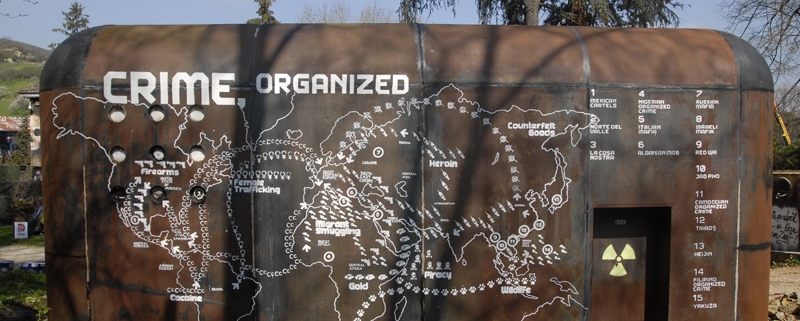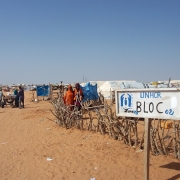Crime-Terror Nexus
In recent years, the pace of globalisation has drastically changed the global security landscape. Behind the current infestation of extremism, there is an influx of non-state actors that exceed borders and threaten global peace and stability.
Violent extremism has many faces; it can be expressed as an act of terrorism; cyber-attack; organised crime; conflict. Due to its perplexing and multidimensional nature, this phenomenon usually prospers in regions where despair, repression and weak governmental presence plague its people (European Union, 2017). Therefore, it is no coincidence that extremism thrives in the Middle East, North Africa, Sub-Saharan Africa and Asia.
For the organised crime, in particular, both the free capital movement and digital communications advancement have facilitated its insurgency. With no respect for social or economic development, tackling transnational crime has become a serious challenge. Through human trafficking, smuggling, drug dealing and money laundering organised criminal groups violate human rights and fuel political corruption. Operating outside the law, the flexibility of committing and operating a crime in more than one state has allowed these criminal groups to become more sophisticated.
In a world where transnational crime constantly evolves and better adapts to the global complexities, new cross-border alliances arise. At this point, the structural similarities between criminal and terrorist groups have led many US experts to a major finding: the discovery of a terror-crime nexus. Seemingly, their main motives diverge; criminal groups are in the pursuit of profit and maintain a low profile from the authorities; on the other hand, extremists are driven by ideological matters and seek public attention.
Nonetheless, there seems to be a link between them. First of all, both are involved in criminal activities that are detrimental to national security: bribery, extortion and intimidation (Shelley et al, 2005). Second, financing plays a substantial role in the functioning of both groups. Especially for terrorist groups, there is an urgent need for sources after seeing their external sponsorship drop so dramatically. In the post 9/11 era, the chance for criminals to “promote and even provide services to terrorists” has grown stronger (Shelley et al, 2005).
Indeed, the convergence between the terrorist and criminal groups flourishes rapidly in conflicted and ungoverned areas. A typical example is the Sahel and Horn of Africa, where the porous borders add to the low regional security and encourage corruption, smuggling and illegal trade (UNODC, 2017). Reportedly, terrorist groups including Boko Haram, Al-Qaida, Taliban and ISIS were involved in cross-border crimes in West Africa (United Nations Security Council, 2016).
Consequently, terror-crime affiliations are one of the top security challenges. For this matter, decision-makers should pay close attention to how crime-terror interactions are evolved. This will allow them to develop an effective strategy against violent extremism. Finally, international terror-crime coordination will provide the intelligence offices with valuable information for the identification of criminal groups and may lead them to unearth terrorist links.
Photo: Thierry Ehrmann, Cryptocurrency Coins (2019). Source: (flickr.com) | (CC BY 2.0)
Bibliography
European Union (2017) Counter-Terrorism & Organised Crime, EU Global Strategy, Available at: https://europa.eu/globalstrategy/en/counter-terrorism-organised-crime (Accessed 24th May 2017)
Organised crime and terrorist groups: comrades or chameleons? (2009) Video, NATO Review, Available at: http://www.nato.int/docu/review/2009/organized_crime/Terrorism_Relation_OrganizedCrime/EN/index.htm (Accessed 25th May 2016)
OSCE (2015) Statement on Transnational Threats and Challenges, Permanent Delegation of Norway to the OSCE, Vienna, Available at: http://www.osce.org/pc/166631?download=true (Accessed 24th May 2017)
Rollins J. and Wyler S. L. (2013) Terrorism and Transnational Crime: Foreign Policy Issues for Congress, Congressional Research Service, 11th June, Available at: https://fas.org/sgp/crs/terror/R41004.pdf (Accessed 26th May 2017)
Shelley I.L., Picarelli T.J., Irby A., Hart M.D. Craig-Hart A.P. Williams P., Simon S., Abdullaev N., Stanislawski B. and Covill L. (2005) Methods and Motives: Exploring Links between Transnational Organized Crime & International Terrorism, U.S. Department of Justice, Available at: https://www.ncjrs.gov/pdffiles1/nij/grants/211207.pdf (Accessed 26th May 2017)
United Nations Security Council (2016) Terrorism, Organized Crime Still Plague West Africa despite Peaceful Elections throughout Region, Special Representative Tells Security Council, 7604th Meeting (PM), SC/12201, 14th January, Available at: https://www.un.org/press/en/2016/sc12201.doc.htm (Accessed 27th May 2017)
UNODC (2017) Countering the funding of violent extremism in the Sahel and the Horn of Africa, West and Central Africa, West and Central Africa, Available at: https://www.unodc.org/westandcentralafrica/en/2017_02_16_workshop_cve_sahel_hoa.html (Accessed 24th May 2017)
UNODC (2017) Organised crime, Available at: http://www.unodc.org/unodc/en/organized-crime/index.html (Accessed 26th May 2017)






Leave a Reply
Want to join the discussion?Feel free to contribute!